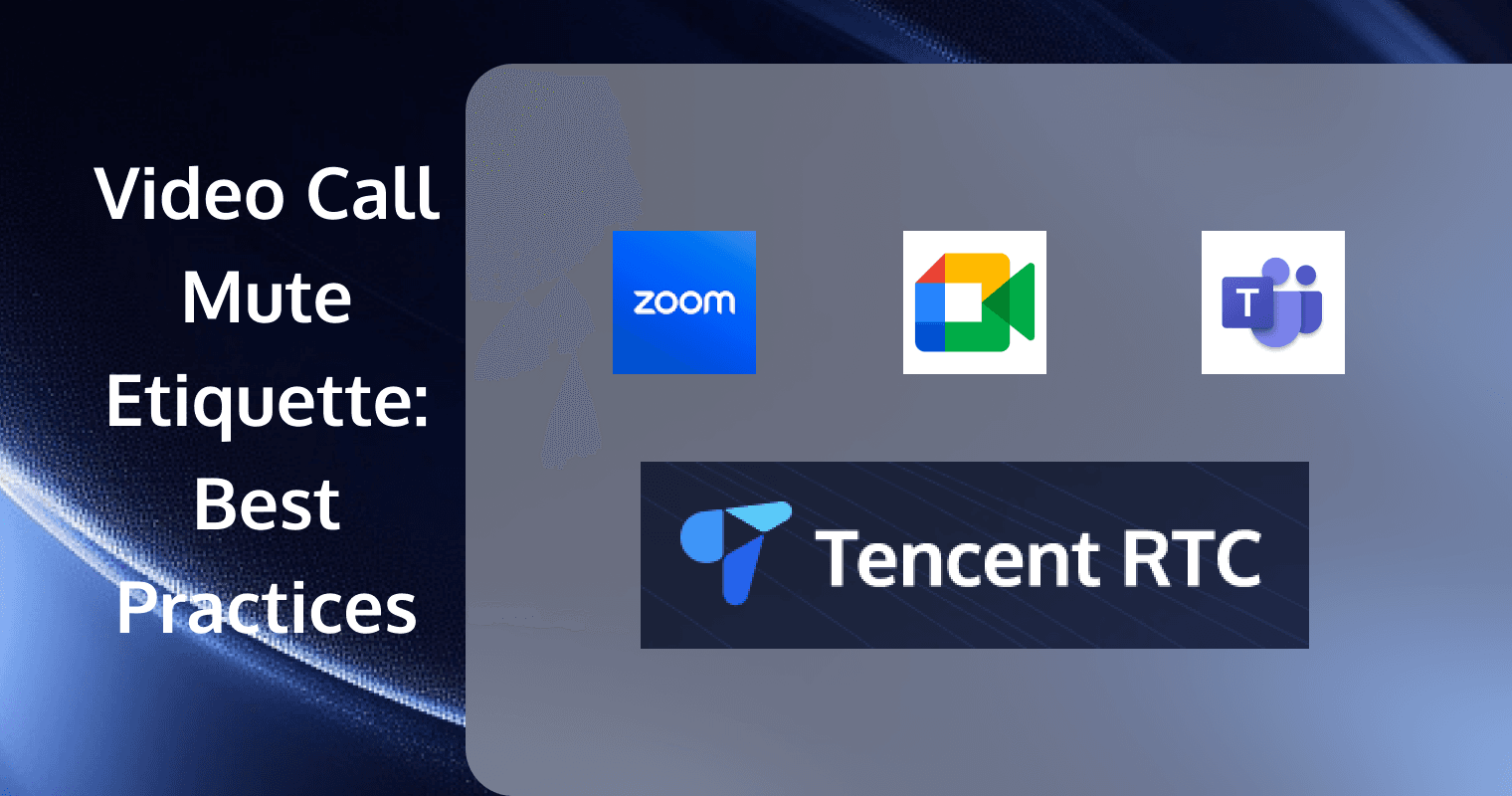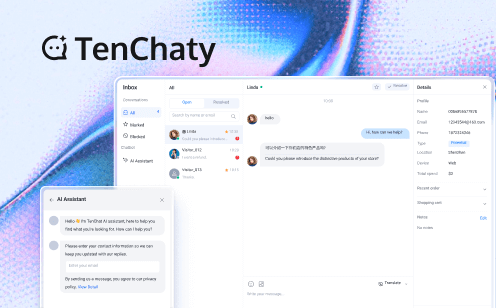
If you’ve ever wondered, “Should I mute myself right now?” during a video call, you’re not alone. Figuring out muted video call etiquette can feel tricky. Many people struggle to strike the right balance between avoiding unintentional interruptions and keeping the call smooth and engaging.
Whether it’s a work meeting, virtual classroom, or online gathering, muting yourself at the right moments can show courtesy to others while staying present. Read on as we dive into why muting matters, when to do it, and how to keep your calls productive and professional.

Why Do We Mute Ourselves on Video Calls?
In many cases, hitting the mute button can improve the overall experience for everyone on the video call. Here’s why:
- Reducing Background Noise: Background noises are inevitable, whether it’s a dog barking, a baby crying, or a neighbor mowing the lawn. By muting yourself, you help eliminate these distractions, allowing others to focus on the conversation instead of the sounds happening in your environment.
- Avoiding Interruptions: Even the smallest sounds, like typing on a keyboard or shifting in your chair, can be surprisingly loud on a video call. Muting prevents these noises from interrupting others when they’re speaking.
- Showing Courtesy to Others: A video call muted shows you value the time and attention of everyone involved. It’s a small gesture that demonstrates respect, helping to create a smoother and more professional atmosphere.
When Should You Mute Yourself during a Video Call?
It’s not always obvious when to mute yourself, but there are a few common situations where it really helps. Here are some moments when you should consider hitting that mute button:
- When You’re Not Speaking: If you’re not actively contributing to the discussion, it’s a good idea to mute yourself. This prevents unintentional sounds, like keyboard clicks or a clanging coffee cup, from being picked up by your microphone.
- During Background Noise: If you’re in a place with unavoidable sounds—like a bustling café, noisy street, or home with active kids—muting helps keep the focus on the speaker.
- During Group Discussions: In larger meetings or brainstorming sessions, it’s best to mute when others are speaking. This helps avoid overlapping audio and ensures the speaker’s voice comes through clearly.
- While Eating or Drinking: The sounds of munching or sipping can be distracting. It’s courteous to mute yourself during meals or snacks to maintain a pleasant audio environment for everyone.
- If You Need to Step Away: If you have to leave your computer briefly, muting ensures any noises you make don’t interrupt the meeting. Remember to turn off your camera too, if necessary.
How to Mute in Video Calls?
Muting yourself during video calls is a straightforward process, though the exact steps can vary depending on the platform you’re using. Here’s a general guide to muting on some of the most popular video conferencing applications:
Zoom
- Using the Interface: Click the microphone icon located in the bottom-left corner of the Zoom window. When muted, the icon will display a red diagonal line.
- Keyboard Shortcut:
Windows: Press Alt + A to toggle mute/unmute.
Mac: Press Command + Shift + A to toggle mute/unmute.
- Push-to-Talk: While muted, hold down the spacebar to temporarily unmute yourself. Release the spacebar to return to mute.
Microsoft Teams
- Using the Interface: Click the microphone icon in the meeting controls, typically found at the upper-right area of the screen. A line through the icon indicates you are muted.
- Keyboard Shortcut:
Windows: Press Ctrl + Shift + M to toggle mute/unmute.
Mac: Press Command + Shift + M to toggle mute/unmute.
- Push-to-Talk: While muted, hold down
Windows: Hold down Ctrl + Spacebar to temporarily unmute yourself.
Mac: Hold down Option + Spacebar to temporarily unmute yourself.
Google Meet
- Using the Interface: Click the microphone icon at the bottom center of the screen. When muted, the icon will turn red with a slash through it.
- Keyboard Shortcut:
Windows: Press Ctrl + D to toggle mute/unmute.
Mac: Press Command + D to toggle mute/unmute.
- Push-to-Talk: While muted, hold down the spacebar to temporarily unmute yourself. Release the spacebar to return to mute.
Best Practices for Managing Mute During Video Calls
Managing the mute button effectively during video calls is an underrated skill that can significantly improve the flow and professionalism of your meetings. Here are some best practices to help you navigate mute etiquette:
Turn on the “Mute Upon Entry” Setting
Most video conferencing platforms allow you to set your microphone to mute by default when joining a call. Taking advantage of this feature ensures that you don’t accidentally interrupt the meeting with background noise or conversations as you join.
Here’s how to enable “Mute Upon Entry” in Zoom, for example:
On the desktop app:
- Open the Zoom app on your computer.
- Click on your profile picture in the top-right corner, then select Settings from the dropdown menu.
- In the Settings window, navigate to the Audio tab.
- Check the box next to “Mute my mic when joining.”
To have video call on phone muted upon entry
- Open the Zoom app on your mobile device and sign in to your account.
- At the bottom of the screen, tap the Settings icon (gear icon).
- In the Settings menu, tap on Meetings to access your meeting preferences.
- Toggle on Always Mute My Microphone.
Double-Check Your Mute Status Before Speaking
We’ve all had that awkward moment of talking while muted. Before you chime in, glance at your mute icon or press your unmute shortcut to ensure you’re heard clearly.
Be Mindful of Background Noise
If you’re in a noisy environment, stay muted as much as possible. Even subtle sounds like typing, fans, or traffic can be amplified through your microphone and become disruptive.
Use Push-to-Talk Features
If you’re in a meeting where you only need to speak occasionally, consider using the push-to-talk feature. This allows you to stay muted by default and unmute temporarily by holding down the Spacebar.
Communicate Non-Verbally When Muted
While muted, use visual cues like nodding or hand gestures to show engagement. This helps convey your attentiveness without needing to unmute.
Communicate Clearly When Muting or Unmuting
If you’re managing a meeting or presentation, let others know when you’re muting yourself or when you’d like participants to mute. This keeps everyone on the same page and minimizes interruptions.
How TRTC Can Help Build Your Own Video Call App with Mute Features
If you’re a developer aiming to build a video call app with advanced mute functionalities and a seamless user experience, Tencent Real-Time Communication (TRTC) is an ideal solution.
TRTC, powered by Tencent Cloud, offers a low-latency, high-quality messaging and audio/video communication service that allows you to develop reliable real-time apps quickly and at a low cost.
Here’s why TRTC’s video call solution is worth considering:
Quick Integration with Pre-Built UIKits
TRTC provides ready-to-use UIKits that allow you to integrate voice and video calling into your app with minimal effort. With just a few lines of code changes, you can quickly add essential features like mic on/off, video on/off, and more. This means you can focus on customizing your app instead of worrying about the core communication functionalities.
All-in-One Calling Solutions
Whether it’s 1-to-1 calls, group chats, or video/voice-only options, TRTC supports flexible communication scenarios. Perfect for casual chats, professional meetings, or telemedicine, TRTC adapts to all use cases.
Enhanced User Engagement
TRTC includes advanced features like:
- Mic On/Off for seamless mute control.
- Offline Push Notifications to keep users updated.
- AI Noise Suppression to ensure clear communication.
- Virtual Backgrounds and Floating Windows for an enriched experience.
Cross-Platform Compatibility
With support for iOS, Android, Windows, macOS, web, and more, TRTC works across 20,000+ device models, ensuring a seamless user experience on any platform.
High Performance and Stability
TRTC guarantees global end-to-end latency under 300ms and supports audio calls even with an 80% packet loss rate. Its scalable architecture ensures reliability for tens of millions of users, backed by a 99.9% SLA.
Conclusion
To wrap it up, muting yourself during a video call is one of the simplest ways to keep things focused and free of distractions. By understanding the mute settings on your device and following the muted video call etiquette when it’s appropriate, you can help the meeting run smoothly and make sure everyone hear clearly. For larger meetings, in particular, consider using the push-to-talk feature or set your mic to “muted upon entry”.
FAQs
What does mute mean on a video call?
“Mute” on a video call means turning off your microphone so others can’t hear you. You can still hear them, but they won’t hear any sounds from your end until you unmute yourself.
What happens when a call is muted?
When a call is muted, the microphone on the user’s device is turned off, preventing their voice or any background sounds from being heard by others. This ensures that only the intended speakers are heard.
Can someone see I muted them on a video call?
If you mute someone during a video call, they will see a notification on their screen that says, “The host has muted you.” However, only the session leader or host has the ability to control other participants' microphones.
If you have any questions or need assistance online, our support team is always ready to help. Please feel free to Contact us or join us on Telegram or Discord. For technical problems, you can also get help directly from developers on Stack Overflow.


